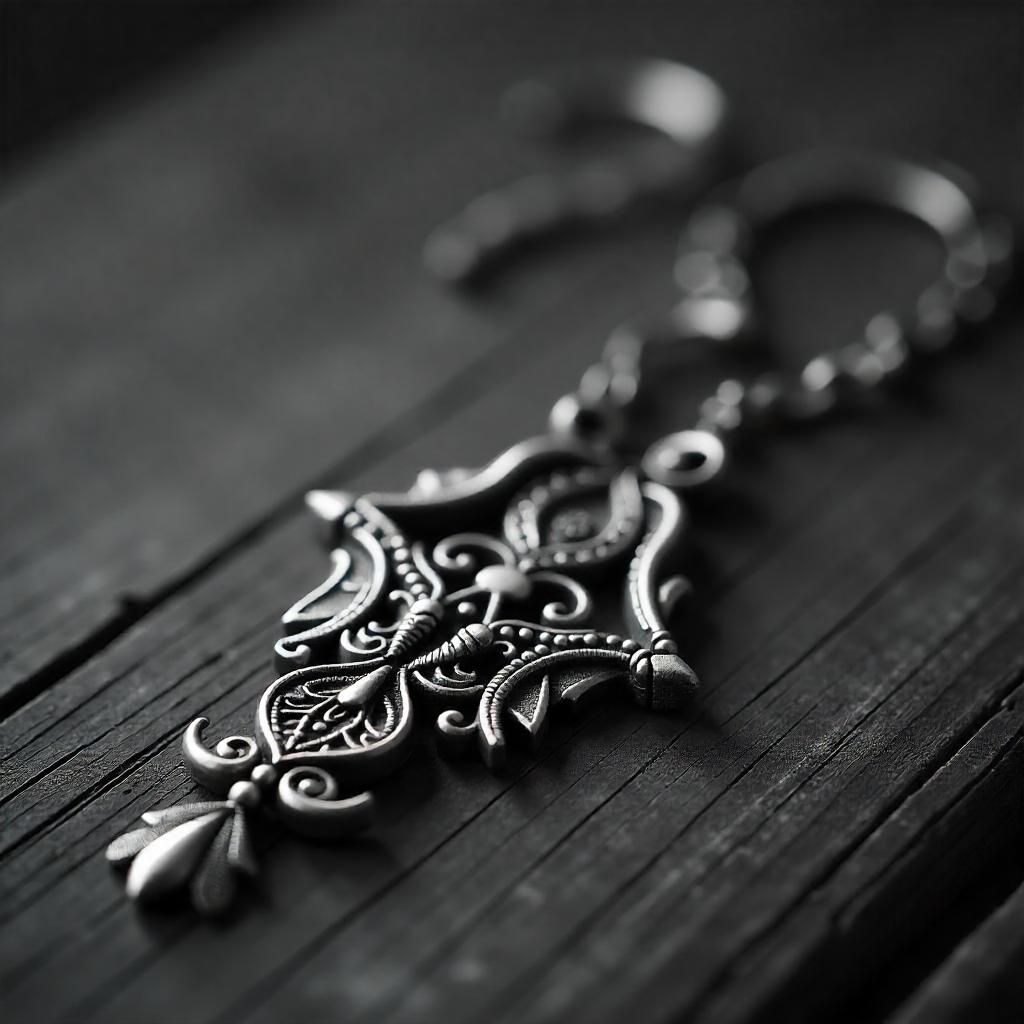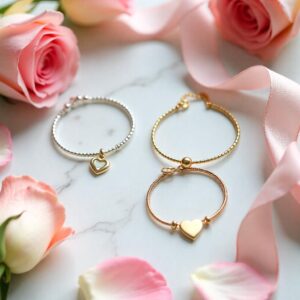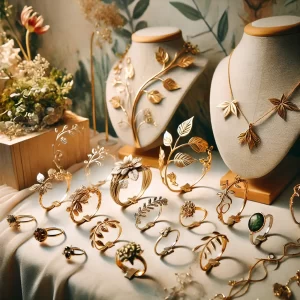Introduction
Silver jewellery is a timeless favourite known for its clean, lustrous finish and versatility in both casual and formal styles. However, unlike gold, silver is prone to tarnishing over time, often resulting in dullness or dark patches. The good news? You don’t need to run to a professional every time your silver starts to look a bit tired. With a few household items and a bit of care, you can easily bring back its shine from the comfort of your home. This guide will show you simple, effective techniques to clean and restore your silver jewellery, along with tips to prevent future tarnish.

Why Silver Tarnishes
Silver tarnishes as a natural result of a chemical reaction between silver and sulfur-containing substances in the air. This reaction creates silver sulfide, which appears as a dark coating on your jewellery. Tarnish can also be caused by other environmental factors such as humidity, pollution, sweat, perfume, lotions, and even exposure to certain packaging materials. The longer your jewellery is exposed to these elements, the more likely it is to tarnish. Thankfully, this type of oxidation affects only the surface and can be reversed with proper care.
Recognising Tarnish and When to Clean
If your silver jewellery has lost its shine, developed dark grey or black areas, or looks unevenly discoloured, it’s time for a clean. A light cleaning every few weeks can prevent tarnish buildup, while deeper cleaning can be reserved for pieces that haven’t been worn in a while. Always inspect your jewellery in good light to determine whether it needs a quick polish or a more thorough clean.
Home Methods to Clean Tarnished Silver
One of the most popular and effective methods is the baking soda and aluminum foil technique. Start by lining a bowl with aluminum foil, shiny side facing up. Place your jewellery inside and sprinkle it generously with baking soda. Next, pour boiling water into the bowl until the pieces are submerged. You’ll notice a slight fizzing as the tarnish lifts off the silver and bonds with the foil. Let it sit for about ten minutes, then rinse the jewellery thoroughly with cool water and dry it using a soft, lint-free cloth.
Another method is to use a natural polish made from lemon juice and olive oil. Mix half a cup of lemon juice with a teaspoon of olive oil. Dip a soft cloth into the mixture and gently rub your silver jewellery in circular motions. Once the tarnish has lifted, rinse the piece under warm water and buff it dry to restore its glow.
For particularly stubborn tarnish or intricate detailing, non-gel white toothpaste can also be used. Apply a small dab onto a soft-bristled toothbrush and gently scrub the jewellery. Be cautious to avoid excessive pressure, especially on delicate items. Afterward, rinse the piece under lukewarm water and pat dry.
A vinegar and baking soda soak is another reliable solution. In a small bowl, combine half a cup of white vinegar with two tablespoons of baking soda. Soak your jewellery for two to three hours, then rinse well and dry. This method is excellent for deep-set tarnish and older pieces that haven’t been cleaned in a long time.
Preventing Tarnish and Long-Term Care
Cleaning your silver jewellery is only half the battle—keeping it clean is just as important. Always store silver in a cool, dry place away from sunlight. Use soft cloth pouches, zip-lock bags, or anti-tarnish paper to help prevent exposure to air and moisture. Avoid leaving jewellery in the bathroom, where humidity levels are high, and be mindful of contact with perfumes, lotions, and hair products.
After each use, gently wipe your jewellery with a soft cloth to remove oils and sweat. Regular light polishing can help keep tarnish at bay and prolong the shine. For pieces that are worn infrequently, consider placing silica gel packets or anti-tarnish strips in your jewellery box for added protection.
When to Consult a Professional
While home cleaning is suitable for most silver jewellery, certain items should be handled by professionals. These include antique pieces, jewellery with fragile or porous gemstones, and anything with intricate or delicate settings. Professional jewellers have access to ultrasonic cleaners and polishing tools that can safely restore even the most precious items without risk of damage.

Conclusion
Tarnished silver jewellery doesn’t mean the end of its beauty. With the right techniques and a little care, you can keep your pieces looking brilliant for years to come. Whether you use the baking soda method, lemon polish, or a vinegar soak, these at-home solutions are easy, budget-friendly, and effective. Combine them with regular maintenance and proper storage to protect your silver from future tarnish and enjoy its radiant shine every time you wear it.





